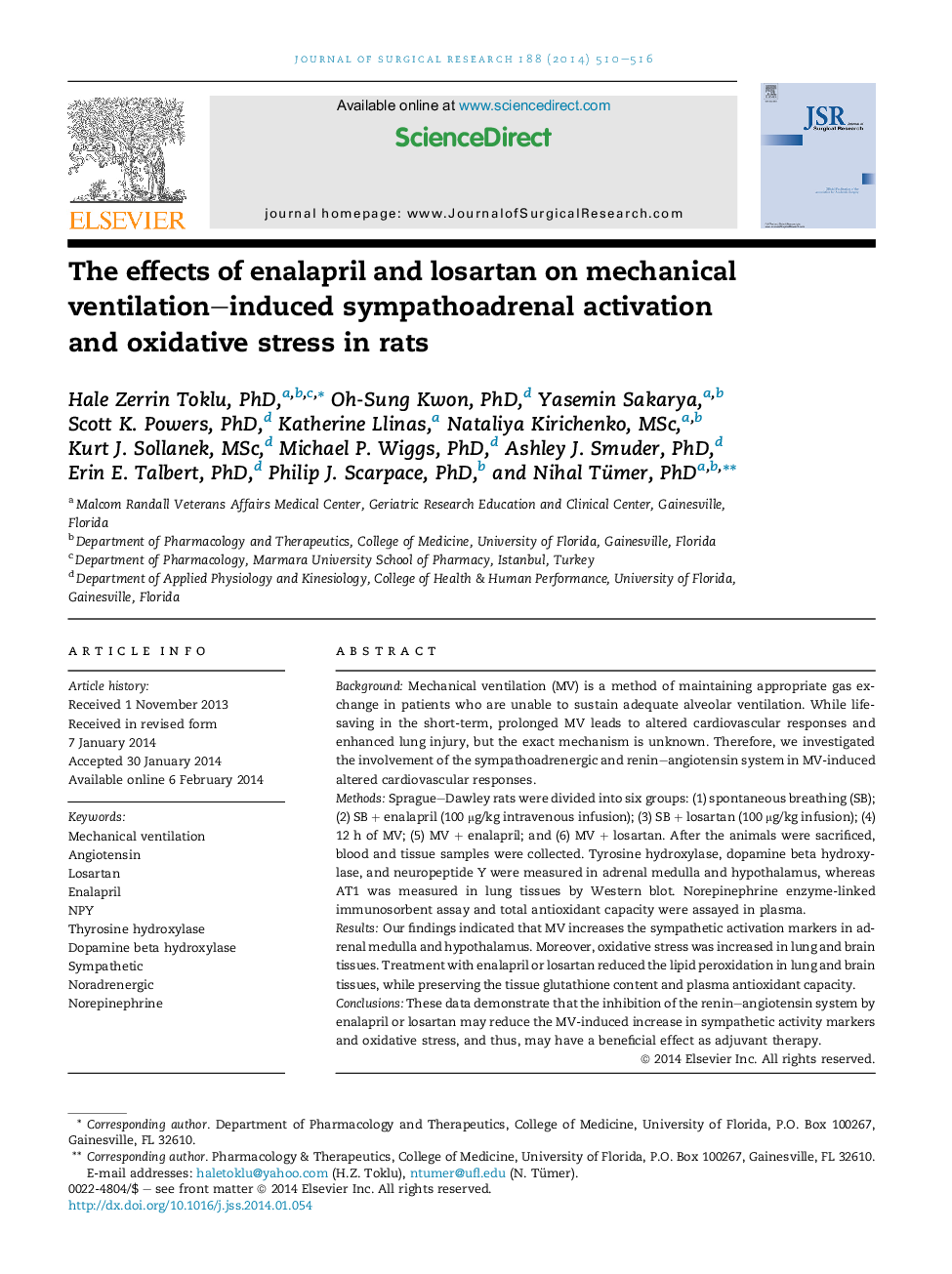| Article ID | Journal | Published Year | Pages | File Type |
|---|---|---|---|---|
| 6254052 | Journal of Surgical Research | 2014 | 7 Pages |
BackgroundMechanical ventilation (MV) is a method of maintaining appropriate gas exchange in patients who are unable to sustain adequate alveolar ventilation. While lifesaving in the short-term, prolonged MV leads to altered cardiovascular responses and enhanced lung injury, but the exact mechanism is unknown. Therefore, we investigated the involvement of the sympathoadrenergic and renin-angiotensin system in MV-induced altered cardiovascular responses.MethodsSprague-Dawley rats were divided into six groups: (1) spontaneous breathing (SB); (2) SB + enalapril (100 μg/kg intravenous infusion); (3) SB + losartan (100 μg/kg infusion); (4) 12 h of MV; (5) MV + enalapril; and (6) MV + losartan. After the animals were sacrificed, blood and tissue samples were collected. Tyrosine hydroxylase, dopamine beta hydroxylase, and neuropeptide Y were measured in adrenal medulla and hypothalamus, whereas AT1 was measured in lung tissues by Western blot. Norepinephrine enzyme-linked immunosorbent assay and total antioxidant capacity were assayed in plasma.ResultsOur findings indicated that MV increases the sympathetic activation markers in adrenal medulla and hypothalamus. Moreover, oxidative stress was increased in lung and brain tissues. Treatment with enalapril or losartan reduced the lipid peroxidation in lung and brain tissues, while preserving the tissue glutathione content and plasma antioxidant capacity.ConclusionsThese data demonstrate that the inhibition of the renin-angiotensin system by enalapril or losartan may reduce the MV-induced increase in sympathetic activity markers and oxidative stress, and thus, may have a beneficial effect as adjuvant therapy.
